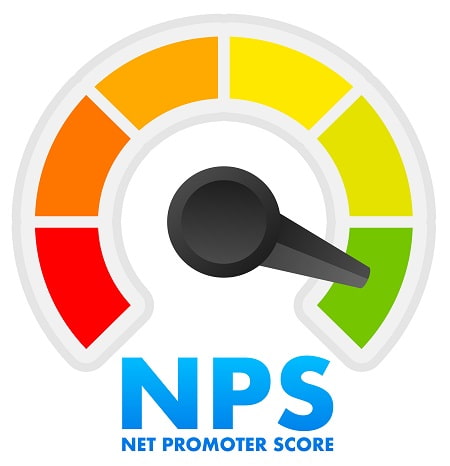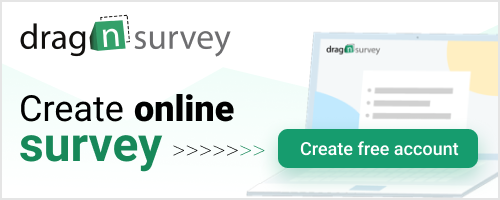The Net Promoter Score (NPS) has emerged as one of the key indicators for measuring customer satisfaction and loyalty. Since its creation by Fred Reichheld in 2003, this simple and effective tool has seen massive adoption by companies worldwide. Not only does the NPS allow for evaluating customer perception, but it also helps identify areas for improvement to optimize the customer experience.

Origins and Definition of the Net Promoter Score
The Net Promoter Score, better known as the NPS, has become an essential indicator for assessing customer satisfaction. Let’s delve into the origins of this tool and decipher its workings to better understand its success.
Creation of the NPS by Fred Reichheld
The NPS was born in 2003, the result of research by Fred Reichheld, an expert in customer strategy and loyalty. Reichheld was seeking a simple and reliable method to measure contentment, as an alternative to the traditional customer satisfaction survey deemed too complex. After testing various questions, he identified the one that best correlated with company growth and profitability: “On a scale of 0 to 10, how likely are you to recommend our company to a friend or colleague?”. Thus, the Net Promoter Score was born.
The NPS Principle
The NPS is based on a single question, called “The Ultimate Question,” which measures the intention to recommend. Respondents give a score from 0 to 10. Based on their score, they are classified into 3 categories: detractors (0 to 6), passives (7 to 8), and promoters (9 to 10).
To calculate the NPS score, the percentage of detractors is subtracted from the percentage of promoters. The result is a score between -100 and +100, reflecting the level of customer loyalty. The higher the score, the more the company benefits from customers willing to recommend it.
Advantages and Limitations of the NPS
The NPS has several advantages:
- Its simplicity: easy to implement and understand
- Its conciseness: a single question to ask customers
- Its universality: applicable to any industry or type of business
- Its proven correlation with growth and profitability
However, the NPS also has certain limitations to keep in mind:
- Its one-dimensional nature: it solely evaluates the intention to recommend
- Its lack of precision regarding the reasons for satisfaction/dissatisfaction
- The absence of consideration for lost customers (attrition)
- Its declarative nature, not always reflecting actual behaviors
Despite these limitations, the NPS remains one of the leading indicators of customer satisfaction. Combined with other metrics, it offers a good starting point for evaluating and improving performance.
Expansion and Use of the Net Promoter Score
Since its creation, the Net Promoter Score has experienced a rapid adoption by companies around the world. This enthusiasm can be explained by the growing desire of organizations to place the customer at the heart of their strategy.
Adoption of the NPS by Companies
The NPS quickly established itself as a standard for measuring customer satisfaction. Companies of all sizes and across all sectors have integrated it into their surveys, attracted by its simplicity and ability to predict growth. In the United States, more than two-thirds of Fortune 1000 companies use the NPS. In Europe as well, numerous companies such as Airbus, Sodexo, and Decathlon have adopted this indicator. The use of the NPS has also become widespread among SMEs and startups, who see it as an affordable way to take the pulse of their customers.
Integration of the NPS into Customer-Centric Strategies
Beyond a simple measurement, the NPS has become a strategic tool for companies that place the customer at the center of their priorities. Integrated into Customer Experience Management (CEM) programs, the NPS allows for evaluating customer perception at different stages of the journey: after a purchase, an interaction with customer service, a delivery, etc. It serves as a starting point for identifying irritants, targeting areas for improvement, and tracking their impact over time. Combined with an analysis of customer verbatims, the NPS helps companies better understand expectations, personalize experiences, and strengthen the customer relationship.
Comparison with Other Customer Satisfaction Indicators
The Net Promoter Score is not the only customer satisfaction indicator. Other metrics exist, such as the CSAT (Customer Satisfaction Score), the CES (Customer Effort Score), or the NIS (Net Satisfaction Index). Each has its specificities: CSAT measures satisfaction at a given moment, CES evaluates the ease of an interaction, and NIS focuses on overall satisfaction. In contrast to these indicators, the NPS focuses on the intention to recommend and long-term loyalty. Far from being competitors, these indicators are complementary. Companies have an interest in combining several of them to have a complete view of customer satisfaction.
Future Impacts and Evolutions of the Net Promoter Score
While the Net Promoter Score has become an essential indicator of customer satisfaction, it must now adapt to the new realities of the digital age. Let’s examine the trends, challenges, and innovations that will shape the future of the NPS.
Trends and Challenges of the NPS in the Digital Era
The rise of digital technology is transforming the customer relationship and raising new challenges for the NPS. With the proliferation of online touchpoints (websites, mobile apps, social media, etc.), collecting customer feedback has become more complex. Companies must rethink their survey methods to adapt to the preferences of hyper-connected consumers, favoring short, personalized questionnaires that are well-integrated into the digital customer journey.
The NPS must also take into account the growing importance of the omnichannel customer experience. Customers expect a seamless and consistent experience across different channels. To reflect this reality, the NPS will need to evolve towards a more comprehensive measurement of satisfaction, integrating all online and offline interactions.
Finally, processing large-scale feedback presents another major challenge. With the democratization of the NPS, companies are collecting an increasing volume of customer verbatims. To transform this raw data into actionable insights, they will need to rely on semantic analysis and artificial intelligence tools like Drag’n Survey capable of detecting irritants and drivers of satisfaction.
Innovations and Alternatives to the NPS
In light of these new challenges, numerous innovations are emerging to evolve the NPS and adapt it to the digital era. We are seeing the emergence of new complementary indicators to the NPS, such as the “Customer Happiness Score” which measures the level of customer happiness, or the “Customer Churn Score” focused on the risks of attrition.
More technological alternatives are also being developed, such as Voice of Customer (VoC) solutions that combine different sources of feedback (surveys, social media, emails, chats, etc.) to paint a more complete picture of satisfaction. Customer Journey Analytics tools also allow for dynamically tracking the NPS throughout the customer journey in order to detect friction points in real-time.
The rise of artificial intelligence reveals new perspectives, such as the proactive prediction of at-risk customers by analyzing declines in NPS combined with other weak signals. In the future, AI could even personalize NPS survey questions based on each customer’s profile and past interactions.
Future Prospects for the Net Promoter Score
While it is clear that the Net Promoter Score will need to adapt, it still has a bright future ahead. More than just a simple indicator, the NPS has established itself as a mindset placing the customer and their satisfaction at the heart of the company’s strategy. This “customer-centric” philosophy, more relevant than ever, ensures the sustainability of the NPS.
However, the NPS of tomorrow will not be the same as yesterday’s. It will need to reinvent itself to integrate new consumer expectations and make the best use of technological innovations. More personalized, more predictive, and more deeply rooted in the omnichannel customer journey, the NPS will continue to evolve in step with the digital transformations.
The future of the NPS will also involve better synergy with other indicators. Combining attitudinal measurements (NPS) and behavioral measurements (repurchase rate, engagement level, etc.) will be the key to gaining a finer understanding of customer satisfaction and loyalty. In an increasingly competitive world, the ability to listen to, analyze, and act on the “voice of the customer” will remain a differentiating factor. A NPS 3.0 is on its way.
More about surveys:
Top 7 JotForm Alternatives, click here
10 Top Tools for Online Surveys, click here
6 Top Google Forms Alternatives, click here
Boosting Customer Loyalty with NPS, click here
A Complete Guide to NPS Calculation, click here
10 Best Online Quiz Software Options, click here
5 Key Customer Satisfaction Indicators, click here
Discovering the Best Online Survey Platforms, click here
10 Best Tools for Customer Satisfaction Surveys, click here
Read the article:
French – Décodage du NPS, click here
Polish – Rozszyfrowanie NPS, click here
German – NPS entschlüsseln, click here
Portuguese – Decifrando o NPS, click here
